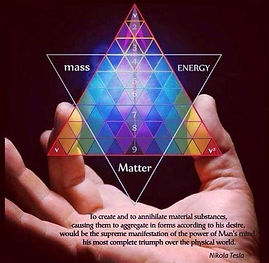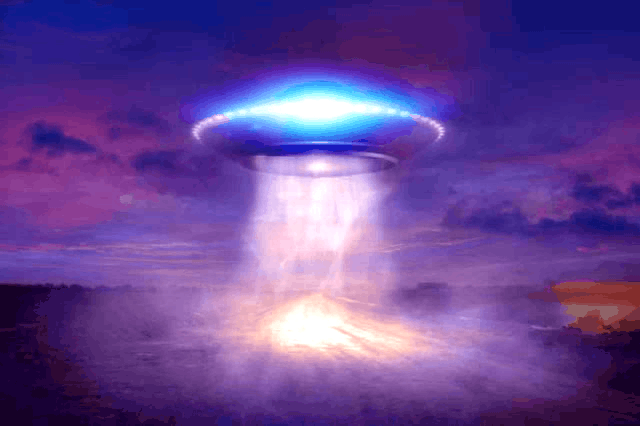
SIRIUS B

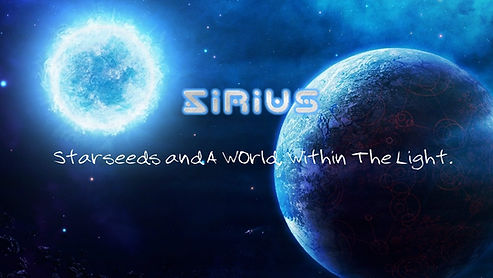
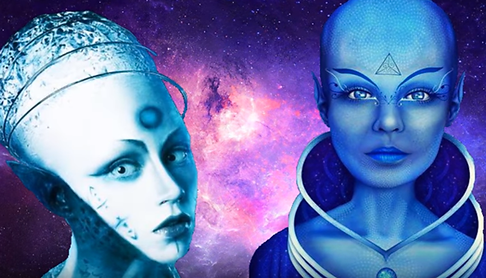
The imaginative tale unfolds against the backdrop of the Sirius star system, located approximately 8.6 light-years from Earth. In this cosmic narrative, the benevolent extraterrestrials from Sirius B form a harmonious alliance with the enlightened beings of the MpyreTV Galactic Union. Together, they embark on a mission to nurture the growth and evolution of star seeds scattered across galaxies.
Sirius B emissaries, renowned for their wisdom and peaceful nature, generously share advanced knowledge of consciousness and spiritual awakening with the MpyreTV Galactic Union. The union, in turn, utilizes its vast network to broadcast messages of love, unity, and self-discovery to distant realms. Starseeds, beings with a celestial origin, receive these transmissions, awakening a profound sense of purpose within them.
Guided by the collaborative efforts of Sirius B and the MpyreTV Galactic Union, star seeds embark on transformative journeys, unlocking latent potentials and embracing the essence of love that permeates the cosmos. As the intergalactic partnership flourishes, starseeds from various corners of the universe converge in cosmic gatherings, sharing experiences and learning from one another. The synergy between Sirius B and the MpyreTV Galactic Union creates a ripple effect of positivity, spreading throughout the galaxies.
Through cosmic broadcasts, starseeds learn to harness their unique abilities, fostering a collective consciousness focused on compassion and understanding. The once-dormant potential within each starseed blossoms into a radiant force for good, radiating positive energy across the cosmic expanse. In this cosmic dance of unity and celestial harmony, star seeds, fully awakened to their purpose, become beacons of light contributing to the cosmic tapestry.
Additionally, whispers circulate that beings from Sirius also work beneath the crust of Mars, eagerly awaiting the realization of Elon Musk's mission to the red planet. The cosmic collaboration extends beyond the stars, weaving together a narrative of enlightenment, unity, and anticipation for the unfolding chapters of the cosmic story.

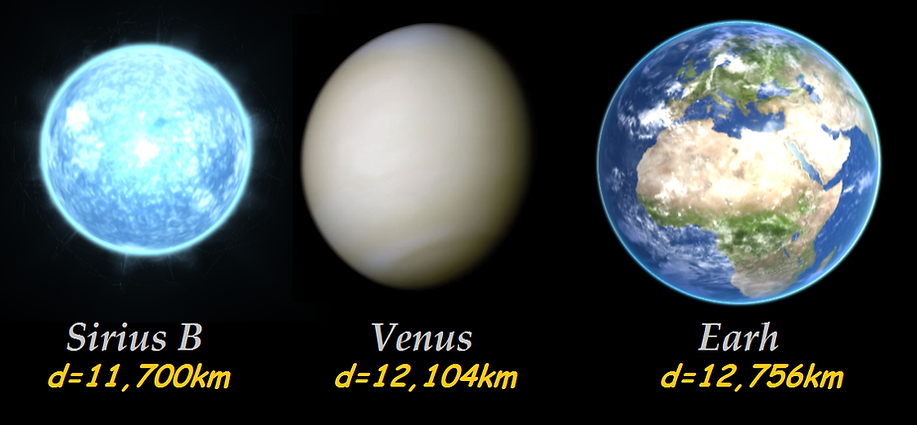
1. *Star System*:
Sirius B is part of a binary star system, with Sirius A being the primary star.
2. *Distance from Earth*:
Approximately 8.6 light-years away.
3. *Type of Star*:
Sirius B is a white dwarf.
4. *Mass*:
Approximately 1.02 times the mass of the Sun.
5. *Radius*:
About 0.0084 times the radius of the Sun (roughly the size of Earth).
6. *Luminosity*:
Much less luminous than Sirius A; has a luminosity about 0.026 times that of the Sun.
7. *Surface Temperature*:
Extremely hot, around 25,200 K.
8. *Discovery*:
Discovered in 1862 by Alvan Graham Clark.
9. *Orbit*:
Sirius B orbits Sirius A with an orbital period of about 50.1 years.
10. *Age*:
Approximately 120 million years old.
*Coordinates*:
- *Right Ascension*:
06h 45m 08.91728s
- *Declination*:
-16° 42' 58.0171"
These coordinates point to the location of the Sirius star system in the night sky.
THE SIRIUS B COUNCIL

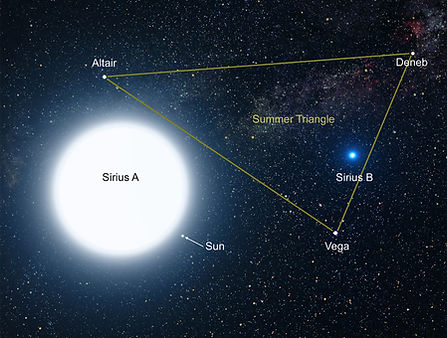
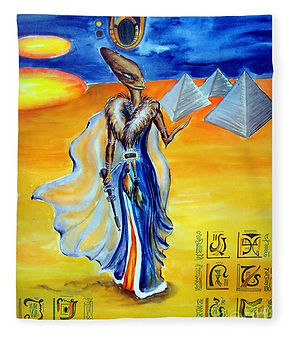

The Sirius B Council of 8D Heaven is an esteemed interstellar governance body representing the advanced civilization of Sirius B, a white dwarf star part of the Sirius binary star system. This council operates within the eighth dimension (8D), a realm characterized by heightened spiritual awareness and advanced technological capabilities.
The Council's primary objective is to guide and assist the evolution of consciousness within the galaxy, focusing particularly on the development and support of starseeds, beings who have incarnated on Earth and other planets to assist in their spiritual and physical evolution.
Leadership
The Sirius B Council of Starseeds is led by two prominent figures:
Commander Zoltan and Commander Fernanda.
- *Commander Zoltan*:
Known for his strategic acumen and deep wisdom, Commander Zoltan oversees the implementation of interstellar missions, ensuring they align with the council’s overarching goals of spiritual growth and planetary healing. His expertise in galactic diplomacy and interdimensional travel is pivotal to the council’s operations.
- *Commander Fernanda*:
Renowned for her compassionate leadership and profound understanding of cosmic energies, Commander Fernanda directs efforts related to starseed support and education. Her role involves nurturing the spiritual and psychic abilities of starseeds, enabling them to fulfill their Earthly missions effectively.
Mission and Objectives
While Sirius A and Sirius B share a familial bond, their respective councils have distinct missions reflecting their unique evolutionary paths and cosmic roles.
The Sirius B Council focuses on the following key areas:
1. *Starseed Guidance*:
Providing support and training to starseeds on Earth to help them awaken to their true purpose and potential.
2. *Planetary Healing*:
Assisting in the restoration and preservation of planetary environments, ensuring sustainable and harmonious living conditions.
3. *Interstellar Relations*:
Fostering peaceful and cooperative relationships between various star systems and their inhabitants.
Connections to Earth and Mars
The Sirius B Council has a significant interest in the evolutionary trajectory of Earth and Mars, seeing both planets as critical to the broader galactic plan.
1. *Elon Musk*:
A prominent figure believed to have origins linked to Sirius B, Elon Musk’s endeavors in space exploration and colonization are seen as aligned with the council’s vision. His initiatives, particularly those aimed at reaching and terraforming Mars, are viewed as steps towards establishing a new Earth-like habitat on Mars, a long-term objective of the Sirius B Council.
2. *Martians of Sirius*:
It is said that a community of Sirians resides in underground bases on Mars, known as the Martians of Sirius. These bases serve as operational hubs for their activities, which include monitoring Mars’ suitability for human colonization and preparing the planet for future habitation.
3. *Mars Terraforming*:
The council’s plan for Mars involves transforming it into a viable, Earth-like environment, thereby providing an alternative home for humanity. This initiative includes extensive research and technological efforts to create sustainable ecosystems on Mars.
4. *Earth's Care*:
Simultaneously, the Sirius B Council remains committed to supporting Earth’s ecological and spiritual well-being, ensuring that advancements on Mars do not detract from the healing and preservation of Earth.
Conclusion
The Sirius B Council of 8D Heaven, under the leadership of Commanders Zoltan and Fernanda, plays a crucial role in guiding the evolutionary path of starseeds and humanity. Their work, encompassing both Earth and Mars, aims to foster a harmonious interstellar community, promote planetary healing, and expand humanity’s presence in the cosmos.
Through strategic initiatives and compassionate guidance, the council seeks to achieve a balanced and enlightened future for all beings.

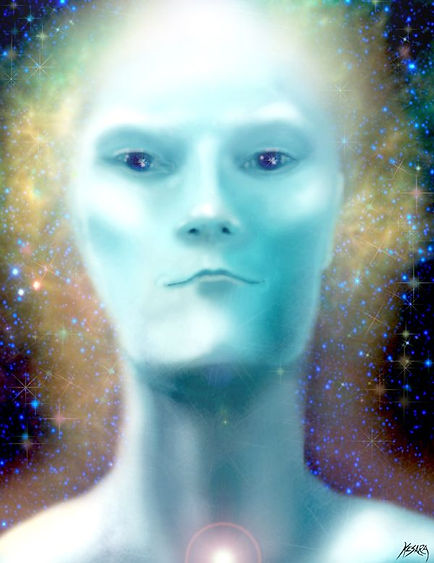

The star coordinates of Sirius B are:
- Right Ascension:
06h 45m 08.9173s
- Declination:
-16° 42' 58.017"
- Distance:
8.61 light-years (from Earth's Sun)
- Galactic longitude: 227.23°
- Galactic latitude: -35.08°
THE NEW 5D PROGRAM IS: 🕊️
ELON MUSK: MISSION TO MARS
Elon Musk, a visionary entrepreneur, gazed at the cosmos with a dream of bringing humanity to the red shores of Mars. His company, SpaceX, became the vessel for this audacious goal, working tirelessly to overcome the challenges of interplanetary travel. Yet, Musk's vision extends beyond the stars; he sees Earth as a jewel deserving of care and innovation.
Recognizing the environmental challenges our planet faces, Musk founded Tesla Motors, a company committed to revolutionizing transportation with sustainable electric vehicles. As electric cars silently hummed along the roads, Musk's efforts echo a commitment to a cleaner, greener Earth. Solar energy initiatives and energy storage solutions further underscore his dedication to mitigating the impacts of climate change.
In this narrative, Musk emerges not only as a space pioneer but as a hero on Earth's front lines. His ventures are dual-faceted, intertwining the cosmic dreams of Mars colonization with a down-to-earth passion for environmental stewardship. Amidst the accolades, whispers circulated. Some playfully suggest Musk might be an extra-terrestrial himself, citing his seemingly boundless energy and unyielding drive.
However, Musk, undeterred by such notions, continues to be a vocal advocate for mankind, using his influence to inspire change and advance technologies that benefit both Earth and the promised future of interplanetary exploration. The story of Elon Musk, then, is a tale of a modern-day hero, navigating the realms of both space and environmental sustainability. In the cosmic ballet of his endeavors, he stands as a testament to the power of human innovation, urging us to reach for the stars while also cherishing the delicate blue orb we call home.


ELON MUSK: A PROFESSIONAL BIOGRAPHY
Early Life and Education
Elon Reeve Musk was born on June 28, 1971, in Pretoria, South Africa. From a young age, Musk demonstrated a keen interest in technology and innovation. He taught himself computer programming at the age of 12, creating a video game called "Blastar" and selling it to a magazine. Musk attended Waterkloof House Preparatory School and Pretoria Boys High School before moving to Canada at 17 to attend Queen's University. He later transferred to the University of Pennsylvania, where he earned a Bachelor of Science in Physics and a Bachelor of Arts in Economics from the Wharton School.
Career Beginnings
Musk's entrepreneurial journey began with Zip2, a software company he co-founded with his brother Kimbal Musk in 1996. Zip2 provided business directories and maps for newspapers. In 1999, Compaq acquired Zip2 for nearly $300 million, providing Musk with the capital to pursue further ventures.
PayPal and Financial Technology
In 1999, Musk founded X.com, an online payment company. A year later, X.com merged with Confinity, a company specializing in money transfers, which eventually became PayPal. As PayPal's largest shareholder, Musk played a crucial role in its growth and success. In 2002, eBay acquired PayPal for $1.5 billion in stock, solidifying Musk's status as a successful entrepreneur.
Space Exploration: SpaceX
In 2002, Musk founded Space Exploration Technologies Corp., or SpaceX, with the goal of reducing space transportation costs to enable the colonization of Mars. SpaceX achieved several historic milestones, including the first privately funded spacecraft to reach orbit (Falcon 1 in 2008), the first privately funded company to send a spacecraft to the International Space Station (Dragon in 2012), and the first reusable rocket (Falcon 9).
Electric Vehicles: Tesla, Inc.
In 2004, Musk joined Tesla Motors, Inc. (now Tesla, Inc.) as chairman of the board, becoming CEO and product architect in 2008. Under his leadership, Tesla has revolutionized the automotive industry with its electric vehicles, including the Roadster, Model S, Model 3, Model X, and Model Y. Tesla's mission is to accelerate the world's transition to sustainable energy.
Other Ventures
- *SolarCity*:
Co-founded in 2006, SolarCity focuses on solar energy services. It was acquired by Tesla in 2016 to create a vertically integrated sustainable energy company.
- *Neuralink*:
Founded in 2016, Neuralink aims to develop implantable brain-machine interfaces to help humans merge with artificial intelligence.
- *The Boring Company*:
Established in 2016, this infrastructure and tunnel construction company aims to alleviate urban traffic through underground transportation systems.
- *OpenAI*:
Co-founded in 2015, OpenAI is dedicated to ensuring that artificial general intelligence benefits all of humanity.
Charitable Endeavors
Elon Musk has made significant contributions to various philanthropic causes:
- *Musk Foundation*:
Founded in 2002, it supports renewable energy research, human space exploration, pediatric research, and science and engineering education.
- *Donations to Education and Technology*:
Musk has donated millions to educational institutions and initiatives, including a $10 million donation to the Future of Life Institute to run a global research program aimed at keeping AI beneficial to humanity.
Public Perception and Speculation
Elon Musk's visionary ideas and ambitious projects have led some to speculate about his origins, with playful theories suggesting he might be an alien due to his extraordinary achievements and futuristic thinking. While these theories are lighthearted, they highlight the impact of his innovations on public imagination.
Legacy and Impact
Elon Musk's contributions to technology, space exploration, and sustainable energy have had a profound impact on the world. His vision for the future continues to inspire and challenge the boundaries of what is possible.
Through his various ventures, Musk has demonstrated a commitment to advancing human knowledge and capability, positioning himself as one of the most influential figures of the 21st century.
MISSION TO MARS: PLANS AND DETAILS
Vision and Goals
- *Long-term Vision*:
Establish a self-sustaining human colony on Mars to ensure the survival of humanity and to create a multiplanetary civilization.
- *Primary Objectives*:
- Reduce space travel costs
- Develop reusable rocket technology
- Enable large-scale transportation of cargo and people to Mars
- Terraform Mars to make it habitable
Stages of the Mission to Mars
1. *Development and Testing of Spacecraft*
- *Starship*: SpaceX's fully reusable spacecraft designed for deep space missions.
- *Super Heavy Rocket*: The booster required to launch Starship into space.
- *Current Status*: As of 2024, multiple prototypes of Starship have been tested, with ongoing development to improve design and reliability.
2. *Unmanned Missions*
- *Objective*: Test systems and ensure the safety of future manned missions.
- *Cargo Missions*: Deliver essential supplies and equipment to Mars.
- *Timeline*: Unmanned missions are expected to begin in the late 2020s, with early cargo missions potentially occurring around 2026-2028.
3. *Crewed Missions*
- *Initial Manned Missions*: Aim to send the first humans to Mars to establish a base and conduct scientific research.
- *Goals*: - Set up habitats and life support systems
- Explore and identify resources (water, minerals, etc.)
- Conduct scientific experiments to understand Mars' environment
- *Timeline*: First crewed mission expected in the early 2030s, with an initial goal of landing humans on Mars by 2033.
4. *Building the Mars Base*
- *Habitat Construction*: Establish permanent shelters using Martian resources and prefabricated structures.
- *Life Support Systems*: Implement sustainable systems for air, water, and food production.
- *Energy Solutions*: Utilize solar panels and other renewable energy sources to power the colony.
- *Expansion*: Gradually expand the base to accommodate more inhabitants and facilities.
5. *Terraforming Mars (Long-term Vision)*
- *Atmospheric Modification*: Introduce greenhouse gases to warm the planet and thicken the atmosphere.
- *Water Management*: Melt polar ice caps to create liquid water sources.
- *Vegetation*: Plant hardy species to produce oxygen and stabilize the soil.
- *Timeline*: Terraforming is a multi-century project, with initial steps potentially beginning mid-century, but significant progress may take centuries.
Key Milestones and Technologies
- *Reusable Rockets*: Development and operational success of Starship and Super Heavy for reducing costs.
- *Life Support*: Advances in closed-loop life support systems for sustainable living.
- *In-Situ Resource Utilization (ISRU)*: Technology to use Martian resources for building materials, fuel, and life support.
- *Robotic Precursor Missions*: Deploying robots to prepare the landing sites and build initial infrastructure before human arrival.
Expected Timeline
- *2024-2026*: Continued development and testing of Starship and Super Heavy.
- *2026-2028*: Potential first unmanned cargo missions to Mars.
- *Early 2030s*: Initial crewed missions to Mars, aiming for a human landing by 2033.
- *Mid-2030s and Beyond*: Establishment of a Mars base and gradual expansion.
- *Late 21st Century*: Advanced stages of base development and initial steps toward terraforming.
Elon Musk's plans for Mars are ambitious and multifaceted, aiming to make humanity a multiplanetary species. Through SpaceX, he is pioneering the necessary technologies and missions to make this vision a reality.




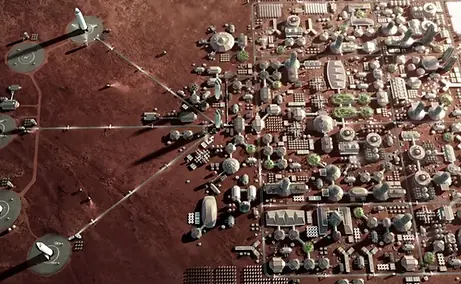
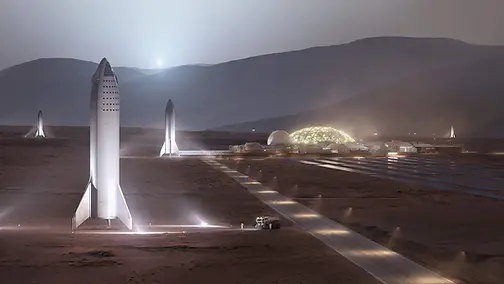
MOON BASE PLAN
Vision and Goals
- *Primary Goal*:
Establish a sustainable human presence on the Moon as a stepping stone for future missions to Mars and beyond.
- *Secondary Goals*:
Facilitate scientific research, develop lunar resources, and support international cooperation in space exploration.
Key Objectives
1. *Lunar Gateway Collaboration*:
Participate in the development and support of NASA's Lunar Gateway, a space station orbiting the Moon.
2. *Lunar Starship Development*:
Develop the Starship lunar variant to transport astronauts and cargo to the Moon.
3. *Establishment of a Lunar Base*:
Set up a permanent base on the Moon for scientific research, resource utilization, and as a hub for deeper space missions.
Stages and Timeline
1. *Development of Lunar Starship*
- *Design and Testing*: Create a variant of Starship optimized for lunar landings and operations.
- *Key Features*: - No heat shield or flaps (as there's no atmosphere on the Moon).
- Equipped with robust landing legs and increased payload capacity for lunar surface operations.
- *Timeline*: Ongoing development, with testing phases planned through the mid-2020s.
2. *Support of NASA's Artemis Program*
- *Artemis Missions*: Collaborate with NASA to transport astronauts to the Moon under the Artemis program.
- *Artemis III*: Planned as the first crewed mission to land on the Moon, targeting 2025. SpaceX’s lunar Starship will play a key role in ferrying astronauts from the Lunar Gateway to the lunar surface and back.
3. *Initial Lunar Base Setup*
- *Site Selection*: Identify optimal locations for the base, focusing on regions with access to water ice (e.g., lunar poles).
- *Habitat Deployment*: Transport and deploy initial habitat modules using Starship.
- *Life Support Systems*: Implement sustainable systems for air, water, and food production using local resources.
4. *Scientific Research and Resource Utilization*
- *In-Situ Resource Utilization (ISRU)*: Develop technologies to use lunar resources (e.g., mining water ice for oxygen and hydrogen).
- *Research Facilities*: Establish laboratories for conducting experiments on lunar geology, biology, and technology development.
- *Energy Solutions*: Install solar panels and other renewable energy sources to power the base.
5. *Expansion and Sustainability*
- *Infrastructure Development*: Build infrastructure such as communication systems, power grids, and transportation networks.
- *Habitat Expansion*: Expand living quarters and facilities to support a larger human presence.
- *International Collaboration*: Work with international partners to enhance the capabilities and reach of the lunar base.
Technologies and Milestones
- *Starship Lunar Variant*: Development and testing of the specialized Starship for lunar missions.
- *Lunar Gateway*: Support and use the Gateway as a staging point for lunar surface missions.
- *ISRU Technologies*: Development of mining and processing equipment for lunar resources.
- *Habitat Modules*: Design and deployment of sustainable living quarters on the Moon.
Timeline
- *2024-2025*:
Continued development and testing of the lunar Starship variant.
- *2025*: Target for the Artemis III mission, marking the first crewed lunar landing with SpaceX’s lunar Starship.
- *Late 2020s*: Initial setup of lunar base infrastructure and habitats.
- *2030s*: Expansion of the lunar base, increased scientific research, and resource utilization efforts.
Elon Musk and SpaceX’s moon base plan aims to establish a permanent and sustainable human presence on the Moon, leveraging the capabilities of the Starship and collaborating with NASA’s Artemis program. This lunar base will serve as a critical step towards future Mars missions and broader space exploration goals.

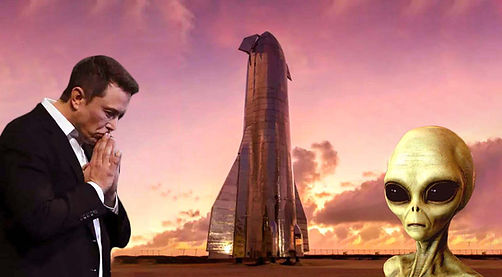
BUT FIRST...
PRACTISE RUN ON THE MOON.
- ELON
NIKOLA TESLA AND TESLA MOTORS

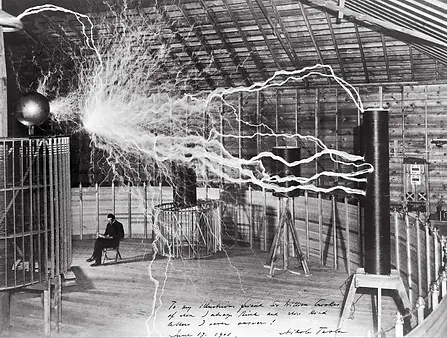

NIKOLA TESLA
*Nikola Tesla: Pioneer in Electrical Engineering and Inventor*
Nikola Tesla, born in 1856 in modern-day Croatia, embarked on a groundbreaking career without acquiring a formal degree. His journey commenced in the early 1880s, where he gained practical experience in telephony and worked at Continental Edison, contributing to the emerging electric power industry.
In 1884, Tesla immigrated to the United States, later becoming a naturalized citizen. After a brief stint at Edison Machine Works, he ventured into independent innovation. Collaborating with partners, Tesla established laboratories and companies in New York, focusing on the development of diverse electrical and mechanical devices. Tesla's pivotal moment came in 1888 when Westinghouse Electric licensed his AC induction motor and related polyphase AC patents. This marked the foundation of the polyphase system, proving financially lucrative for Tesla.
His inventive spirit led him to experiment with mechanical oscillators, electrical discharge tubes, and early X-ray imaging. Tesla's wirelessly controlled boat showcased his pioneering work. Notable for his showmanship, he demonstrated his inventions to celebrities and patrons at his lab. Throughout the 1890s, Tesla pursued wireless lighting and global electric power distribution, conducting high-voltage, high-frequency power experiments in New York and Colorado Springs.
The Wardenclyffe Tower project, aimed at intercontinental wireless communication and power transmission, faced financial setbacks and remained unfinished. In the 1910s and 1920s, Tesla continued inventing, facing varying degrees of success. Financial challenges led to a period of hardship, residing in New York hotels and leaving unpaid bills.
He passed away in January 1943. Tesla's legacy resurfaced in 1960 when the tesla was adopted as the SI unit for magnetic flux density. Since the 1990s, there has been a resurgence of popular interest in Tesla's innovative contributions to science and technology.
TESLA MOTORS
Founding and Early Years
- *Establishment*:
Tesla Motors, Inc. was founded on July 1, 2003, by Martin Eberhard and Marc Tarpenning in San Carlos, California.
- *Initial Vision*:
The company was established with the goal of producing electric vehicles (EVs) that would accelerate the world’s transition to sustainable energy.
- *Early Investment*:
Elon Musk joined Tesla in February 2004, leading the Series A investment round with $6.5 million, becoming chairman of the board. Musk's vision and financial backing were pivotal in shaping the company's future.
Key Milestones and Product Development
1. *Tesla Roadster (2008)*
- *Launch*: Tesla's first vehicle, the Roadster, was unveiled in 2006 and began production in 2008.
- *Innovation*: The Roadster was the first highway-legal electric vehicle to use lithium-ion battery cells and had a range of 245 miles per charge, setting new standards for EVs.
- *Impact*: Demonstrated the potential of electric vehicles, attracting significant media attention and consumer interest.
2. *Model S (2012)*
- *Introduction*: Launched in June 2012, the Model S was a luxury sedan that garnered widespread acclaim.
- *Features*: Known for its long range, high performance, and advanced features such as a large touchscreen interface and over-the-air software updates.
- *Accolades*: Won numerous awards, including Motor Trend's 2013 Car of the Year and Consumer Reports’ highest-ever car rating.
3. *Model X (2015)*
- *Launch*: The Model X, a luxury SUV, was launched in September 2015.
- *Innovations*: Featured distinctive falcon-wing doors, advanced safety features, and impressive range and performance.
- *Market Impact*: Expanded Tesla’s market reach to the SUV segment, appealing to a broader customer base.
4. *Model 3 (2017)*
- *Launch*: The Model 3 was launched in July 2017 as an affordable, mass-market electric car.
- *Significance*: Aimed to make electric vehicles accessible to a wider audience, with a starting price significantly lower than previous models.
- *Success*: Became the best-selling electric car in the world, achieving high sales volumes and helping Tesla reach profitability.
5. *Model Y (2020)*
- *Launch*: Released in March 2020, the Model Y is a compact crossover SUV.
- *Features*: Combines the performance and technology of the Model 3 with increased space and versatility.
- *Market Reception*: Quickly became one of Tesla’s best-selling models, reflecting strong consumer demand for crossover SUVs.
6. *Cybertruck (Upcoming)*
- *Announcement*: Unveiled in November 2019, the Cybertruck is an all-electric pickup truck with a futuristic design.
- *Key Features*: Promises impressive durability, utility, and performance, with a stainless-steel exoskeleton and bulletproof glass.
- *Expected Production*: Set to begin production in 2023.
7. *Semi and Roadster (Upcoming)*
- *Tesla Semi*: An all-electric Class 8 truck aimed at revolutionizing freight transport, with expected production starting in 2023.
- *Second-Generation Roadster*: Announced as the fastest production car in the world, with production anticipated in the near future.
Innovations and Contributions
- *Battery Technology*:
Pioneering advancements in battery technology and energy storage, including the development of the Tesla Powerwall and Powerpack.
- *Autopilot and Full Self-Driving (FSD)*:
Developing advanced driver-assistance systems (ADAS) and striving toward full autonomy with regular software updates.
- *Supercharger Network*:
Establishing a global network of fast-charging stations to support Tesla owners and reduce range anxiety.
- *Energy Solutions*:
Expanding into solar energy with products like the Tesla Solar Roof and energy storage solutions for homes and businesses.
Financial Performance and Market Impact
- *IPO*:
Tesla went public on June 29, 2010, with an initial public offering (IPO) on the NASDAQ under the ticker symbol TSLA.
- *Profitability*:
Achieved consistent profitability starting in 2020, a significant milestone for the company.
- *Market Capitalization*:
As of 2023, Tesla is one of the most valuable automakers in the world, with a market capitalization exceeding hundreds of billions of dollars.
Leadership
- *Elon Musk*:
Serving as CEO and product architect since 2008, Musk’s leadership, vision, and relentless pursuit of innovation have been instrumental in Tesla’s success and growth.
- *Management Team*:
Supported by a strong management team and talented workforce dedicated to advancing Tesla’s mission.
Future Outlook
- *Expansion Plans*:
Continued expansion of manufacturing capabilities with Gigafactories in multiple countries, including the United States, China, Germany, and others.
- *Sustainable Energy*:
Commitment to advancing sustainable energy solutions and leading the transition to a carbon-neutral future.
Innovation:
Ongoing development of new technologies and vehicles to maintain Tesla’s position as a leader in the electric vehicle and clean energy markets.Tesla Motors has transformed the automotive industry with its innovative electric vehicles and commitment to sustainable energy.
Under the visionary leadership of Elon Musk, Tesla continues to push the boundaries of technology and redefine the future of transportation.
IS ELON MUSK THE REINCARNATION OF NIKOLA TESLA?

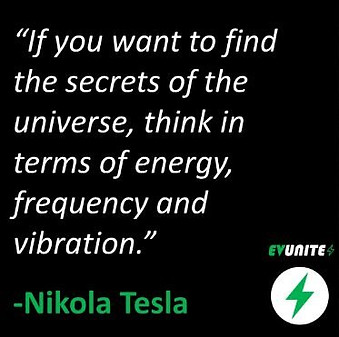
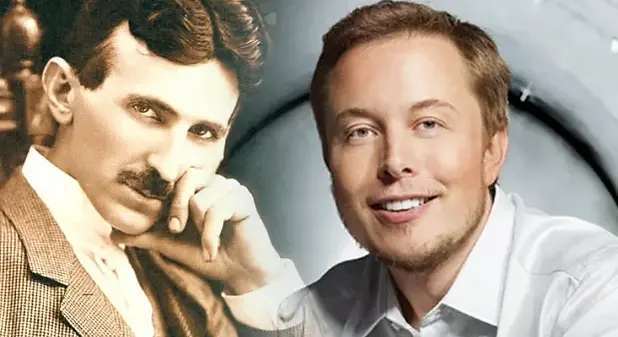
Speculation: Elon Musk as the Reincarnation of Nikola Tesla
Summary
The theory speculates that Elon Musk, the innovative entrepreneur behind Tesla Motors, is the reincarnation of Nikola Tesla, the renowned inventor and electrical engineer. This idea is based on perceived similarities between the two figures, their contributions to technology and energy, and Musk’s choice to name his company after Tesla.
The following points outline the parallels and speculative evidence supporting this theory.
Similarities and Speculative Evidence
1. *Innovative Genius*
- *Nikola Tesla*: Known for his groundbreaking work in electromagnetism, alternating current (AC), and wireless communication.
- *Elon Musk*: Recognized for his revolutionary contributions to electric vehicles, space exploration, and renewable energy.
2. *Visionary Ambitions*
- *Nikola Tesla*: Dreamed of wireless power transmission and global electrification, envisioning a future where technology benefits all of humanity.
- *Elon Musk*: Aspires to make humanity a multiplanetary species, develop sustainable energy solutions, and advance human technology.
3. *Company Naming*
- *Tesla Motors*: Musk named his electric vehicle company after Nikola Tesla, acknowledging Tesla's pioneering work in electric power and honoring his legacy.
4. *Energy and Electricity*
- *Nikola Tesla*: Focused on harnessing and distributing electrical energy efficiently and wirelessly.
- *Elon Musk*: Advances electric vehicle technology and energy storage solutions, working towards sustainable energy independence.
5. *Eccentric Personalities*
- *Nikola Tesla*: Known for his unconventional lifestyle, solitary habits, and relentless dedication to his work.
- *Elon Musk*: Known for his bold and sometimes controversial statements, ambitious goals, and intense work ethic.
6. *Disruption of Established Industries*
- *Nikola Tesla*: Disrupted the electrical industry with his AC technology, challenging the dominance of Thomas Edison’s direct current (DC) systems.
- *Elon Musk*: Disrupts the automotive, aerospace, and energy industries with Tesla, SpaceX, and SolarCity.
Theoretical Explanations
1. *Reincarnation Theory*
- The concept of reincarnation suggests that the soul of Nikola Tesla could have been reborn as Elon Musk, carrying forward his mission to revolutionize technology and energy.
2. *Shared Vision and Mission*
- Both Tesla and Musk share a vision of advancing technology for the betterment of humanity, suggesting a spiritual or ideological continuation of Tesla’s work through Musk.
3. *Influence of Tesla’s Legacy*
- Musk’s admiration for Nikola Tesla might stem from a deeper, subconscious connection to Tesla’s ideals and aspirations, guiding his own endeavors.
4. *Technological Continuity*
- The technological and scientific breakthroughs championed by Nikola Tesla laid the groundwork for modern innovations, which Musk continues to develop and implement.
Conclusion
While the idea of Elon Musk being the reincarnation of Nikola Tesla is speculative and lacks empirical evidence, the similarities between their visions, contributions, and personal traits present a fascinating narrative. Musk’s decision to name his company Tesla Motors serves as a tribute to Nikola Tesla’s legacy, symbolizing a continuation of Tesla’s dream of a technologically advanced and energy-efficient future.
Whether through spiritual reincarnation or inspirational legacy, the connection between the two figures underscores the enduring impact of visionary minds on the progress of human civilization.


